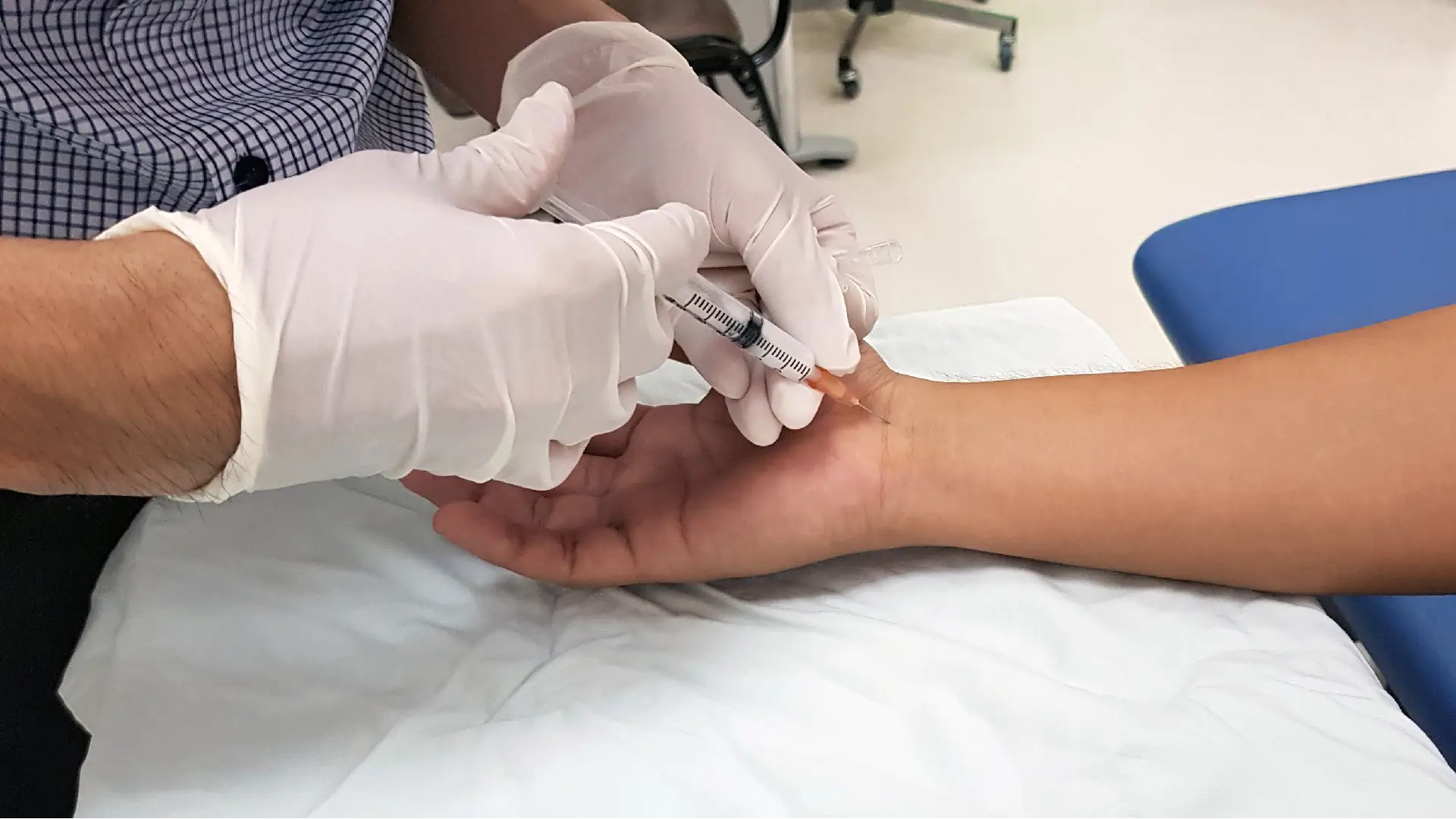
What is a Carpal Tunnel Injection?
A carpal tunnel injection is a treatment where a doctor injects medicine into the carpal tunnel — a narrow passage in the wrist that contains the median nerve. In carpal tunnel syndrome, this nerve gets pinched, causing numbness, tingling, and pain in the hand. The injection contains a corticosteroid (to reduce inflammation) and a local anesthetic (to numb the area). It helps relieve pressure on the nerve and ease symptoms.
How do you prepare for a Carpal Tunnel Injection?
- Tell your doctor about your medical history and any medicines you take, especially blood thinners.
- Tell your doctor if you had any hand surgeries.
- Discuss allergies to steroids or anesthetics.
- You can usually eat and drink normally before the procedure.
- Wear short sleeves or loose clothing so the wrist is easy to access.
- You’ll usually be able to drive yourself home afterward, however it depends on the procedure. Ask your doctor if it’s okay for you.
Why is a Carpal Tunnel Injection performed?
- To reduce pain, tingling, and numbness in the hand caused by carpal tunnel syndrome.
- To improve hand function.
- To help people who cannot take oral medications or want to avoid surgery.
- To provide relief while waiting for other treatments (like splinting, therapy, or surgery).
What can you expect during a Carpal Tunnel Injection?
- The procedure is usually done in a doctor’s office and takes about 10–15 minutes.
- The skin on your wrist is cleaned.
- The doctor inserts a small needle into the carpal tunnel and injects the medicine.
- Ultrasound guidance is used to place the injection accurately.
- You may feel a quick sting or pressure, but it’s usually well tolerated.
- You can use your hand gently afterward, but avoid heavy gripping for a day.
What is the follow-up like for a Carpal Tunnel Injection?
- Some people feel immediate relief from the numbing medicine, but it may wear off after a few hours.
- The steroid usually takes a few days to start working.
- Relief can last from several weeks to months, depending on the severity of the condition.
- Your doctor may recommend splinting, hand therapy, or activity changes to help symptoms last longer.
- Injections are generally limited to a few per year 4 in 12 months in the same wrist.
What are the potential risks for a Carpal Tunnel Injection?
Most side effects are mild and short-term, such as:
- Soreness, swelling, or bruising at the injection site.
- Temporary numbness or tingling.
- A flare-up of pain for a day or two.
- Temporary rise in blood sugar (especially in people with diabetes)
Less common risks include:
- Infection.
- bleeding
- Nerve or tendon injury.
- Skin thinning or color changes around the injection site.
Are there related tests to a Carpal Tunnel Injection?
- A physical exam is usually done first.
- Nerve tests (EMG or nerve conduction studies) may be ordered to confirm the diagnosis.
- Ultrasound is used to guide the injection.
- In some cases, X-rays are used to rule out arthritis or bone problems.
The content above does not provide any medical diagnosis or treatment recommendations. Any information or content on this website is not intended to be a substitute for consulting with a qualified healthcare professional. You should always consult with your healthcare provider before making any decisions related to your health or treatment.

Providing specialized neurological and pain management care with a patient-centered approach. Dr. Sader combines clinical expertise with compassionate care to help patients achieve optimal health outcomes.

